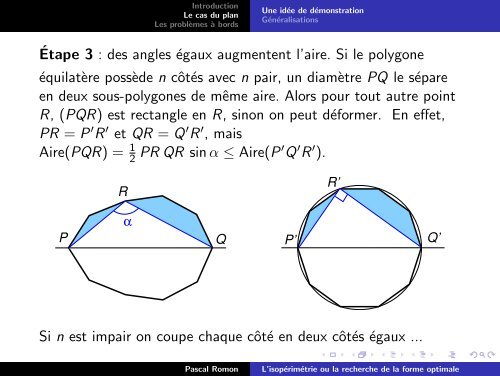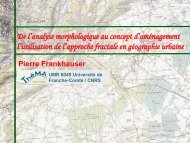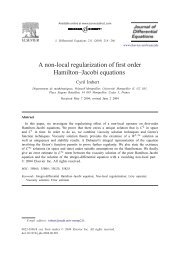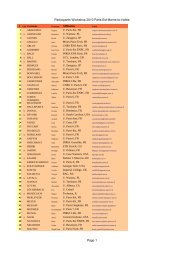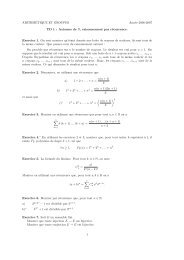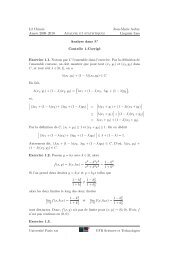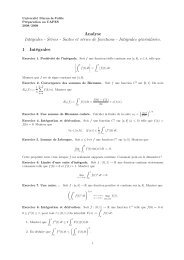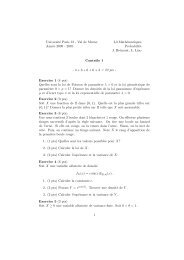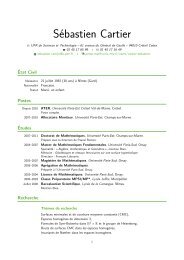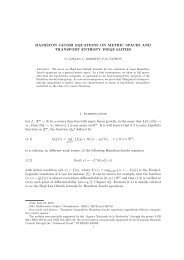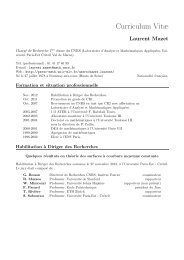L'isopérimétrie ou la recherche de la forme optimale
L'isopérimétrie ou la recherche de la forme optimale
L'isopérimétrie ou la recherche de la forme optimale
Create successful ePaper yourself
Turn your PDF publications into a flip-book with our unique Google optimized e-Paper software.
Introduction<br />
Le cas du p<strong>la</strong>n<br />
Les problèmes à bords<br />
Une idée <strong>de</strong> démonstration<br />
Généralisations<br />
Étape 3 : <strong>de</strong>s angles égaux augmentent l’aire. Si le polygone<br />
équi<strong>la</strong>tère possè<strong>de</strong> n côtés avec n pair, un diamètre PQ le sépare<br />
en <strong>de</strong>ux s<strong>ou</strong>s-polygones <strong>de</strong> même aire. Alors p<strong>ou</strong>r t<strong>ou</strong>t autre point<br />
R, (PQR) est rectangle en R, sinon on peut dé<strong>forme</strong>r. En effet,<br />
PR = P ′ R ′ et QR = Q ′ R ′ , mais<br />
Aire(PQR) = 1<br />
2 PR QR sin α ≤ Aire(P′ Q ′ R ′ ).<br />
P<br />
R<br />
α<br />
Q P’<br />
Si n est impair on c<strong>ou</strong>pe chaque côté en <strong>de</strong>ux côtés égaux ...<br />
Pascal Romon L’isopérimétrie <strong>ou</strong> <strong>la</strong> <strong>recherche</strong> <strong>de</strong> <strong>la</strong> <strong>forme</strong> <strong>optimale</strong><br />
R’<br />
Q’


